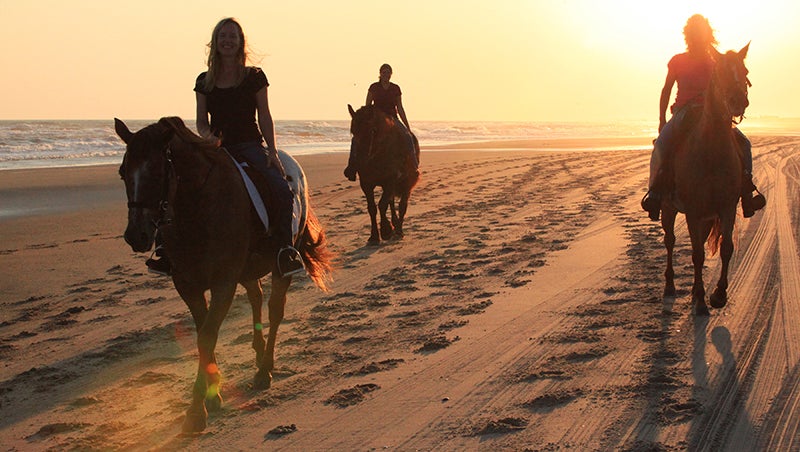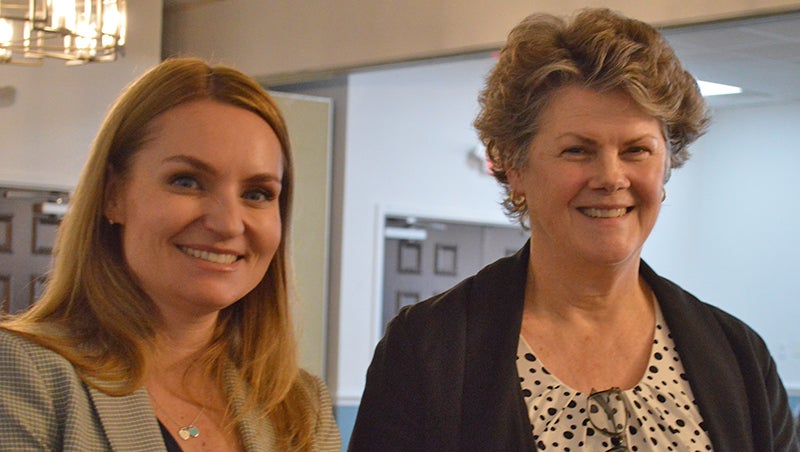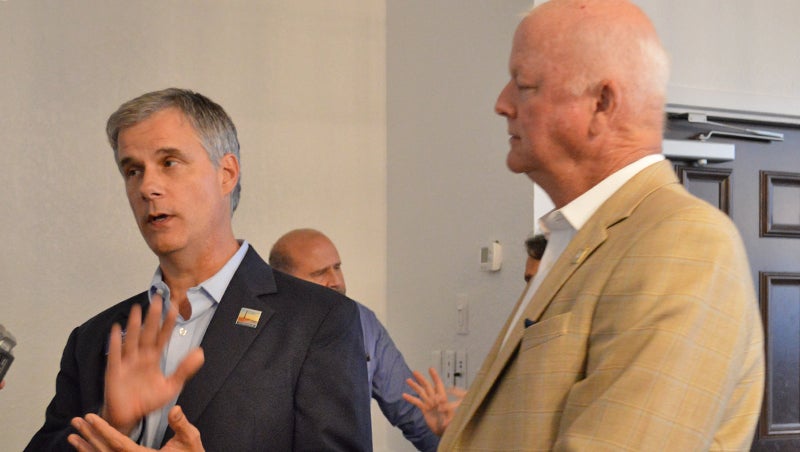Ten-year tourism management plan looks ‘beyond business as usual’
Published 9:41 am Saturday, June 3, 2023
|
Getting your Trinity Audio player ready...
|
A long-range tourism management plan was presented to the Dare County Tourism Board the morning of May 24, 2023. That evening, the plan was presented to a public gathering at the Ramada Inn.
“Our Long Range Tourism Management Plan focuses on an equitable approach that moves beyond business as usual to protect our core values and manage growth of tourism on the Outer Banks of North Carolina. The aim is to ensure that tourism preserves and even benefits the environment, culture, and community livelihood, including quality of life for our residents, and quality of place for our visitors,” states the opening page for the long-range plan.
To put together the plan, about a year’s worth of work was required by consultants, Visitors Bureau staff and the public.
Leading the project were staffers with MMGYNextFactor with partner Tourism Economics.
The report and appendix are crammed with economic information.
In 2021, tourism directly supported almost half – 45.5% – of all jobs in Dare County.
People held 12,295 jobs in food service, accommodations, retail, transportation and other sectors.
While the statistics describe the Dare County economy, the plan addresses how to manage tourism growth.
Consultants interviewed people one-on-one, in seven focus groups, held two resident town hall meetings and analyzed the 4,538 responses to a survey. The consultants were very pleased with the number of survey responses, which is very high compared to other survey results.
More than 60% of survey respondents live on the Outer Banks year-round. “Residents would like to attract visitors who are respectful of our local lifestyle and who care about protecting our natural resources,” states the report.
Responses to the survey showed 37% of respondents are employed in tourism or hospitality jobs. About 40% are retired.
The plan picks up on opinions expressed in the stakeholder responses.
Value and vision statements are presented.
“Outer Banks Values: A historically significant coastal community rooted in tradition, shaped by its dynamic natural environment, and celebrated for its quality experiences for locals and visitors.
“Outer Banks Vision: In 2033, the Outer Banks will be idyllic island communities where residents and visitors coexist and thrive thanks to thoughtful efforts to balance and sustain quality of life with quality of place.”
Four strategies along with tactics are suggested:
1. Strengthen resident and visitor engagement
a. Continue to connect visitors with area non-profits to support and elevate their work.
b. Lead a resident engagement program including resident advisory panels.
c. Lead investment in the development of a volun-tourism strategy.
d. Convene a task force to support the Visitors Bureau in the ongoing implementation of this plan.
e. Hire a community engagement manager to champion implementation of this plan.
f. Develop a visitor pledge to communicate the important values of responsible behavior to visitors.
2. Adopt an integrated approach to improving environmental stewardship
a. Lead investment in data platforms that allow for real-time analytics and use intel for targeting and education.
b. Further the OBX as a recognized leader in outdoor recreation and stewardship amongst established recreation communities.
c. Collaborate with leading environmentally conscious partners such as the Coastal Studies Institute to further sustainability benchmarks and strategy for visitors.
d. Advocate for increased investment in roads, sidewalks and clean mobility to expand options for non-vehicular transportation.
e. Convene a sustainability committee to provide ongoing input on tourism strategies that minimize environmental impacts.
3. Support infrastructure development that benefits the vitality of the community for residents and visitors
a. Partner with municipalities, counties, region, and state to ensure infrastructure and development initiatives consider sustainability, resident and visitor needs.
b. Partner with the Outer Banks Chamber of Commerce to develop a diverse talent attraction campaign.
c. Continue to pursue development of an Event Center, while considering the ideal management scenario.
d. Improve accessibility for people of all age groups and abilities.
e. Undertake a density study as part of a capacity management plan.
f. Support a pedestrian safety plan to understand the different mobility needs in the Outer Banks.
g. Advocate for initiatives that will help maintain a vital shoreline.
4. Collaborate to advocate for an increase in housing diversity for all residents
a. Collaborate with the county and other partners to advocate for an increase in home ownership options for a broader base of residents with established incentives to develop alternative and more sustainable housing. Develop an awareness and advocacy strategy to educate about needs for more housing diversity.
b. Collaborate with the county and other partners to advocate for a balance in short and long-term rental and home ownership opportunities.
c. Collaborate with Dare County and other partners to advocate for the development of public transportation, other mobility options and workforce accessibility.
d. Partner with local groups to explore public-private housing development opportunities.
The list is long and needs to be studied and prioritized.
The roles of the Tourism Board and Outer Banks Visitors Bureau will vary depending on the topic to be explored and/or implemented. The entities will at times be advocates, leaders, conveners and supporters.
The Tourism Board is expected to take up the plan at its next meeting scheduled for June 15. The long-range tourism management plan is now uploaded to the Outer Banks Visitors Bureau website at outerbanks.org/partners/long-range-tourism-management-plan. A video of the public meeting held May 24 will also be posted.
SUBSCRIBE TO THE COASTLAND TIMES TODAY!









